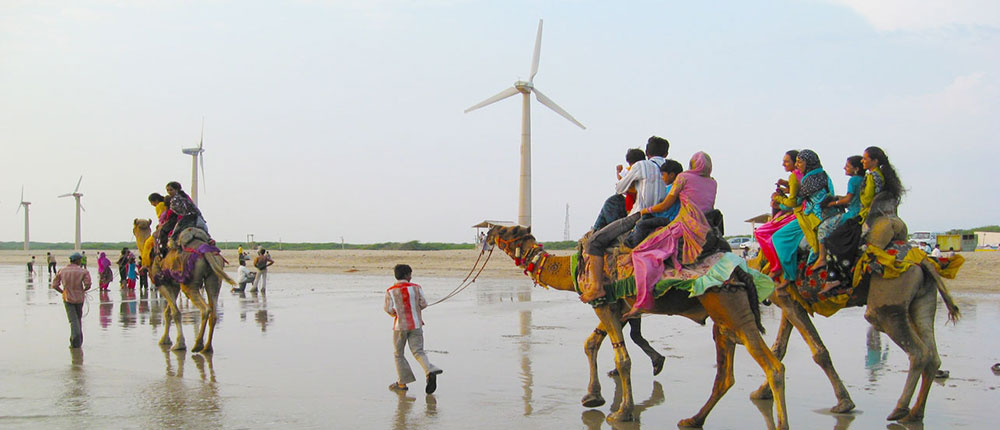Reports
Accelerating India's transition to renewables: Key findings from Energy Transitions Commission India
Three detailed ETC technical reports on how India can grow the share of renewables in its electricity system by 2030 were released at WSDS 2019

India's renewables trajectory can allow unprecedented changes in the energy mix
- India can achieve 30% of variable RE generation by 2030 (wind and solar), and 45% zero carbon generation, including hydro and nuclear.
- This would make India's power sector as clean as Japan's today, and would be unprecedented leapfrogging to decarbonisation of the electricity sector.
Declining costs of renewables means consumers will not be impacted
- Wind and solar are the cheapest source of new electricity – cheaper than coal – and still have a way to fall. By contrast coal tariffs are projected to increase because of rising transport and capital costs. Costs of storage technologies are projected to decline dramatically, which, along with untapped potential for demand response, could be transformational for integrating RE into the grid.
By 2030, we project that the cost of wind and solar will be between 2.3-2.6 Rs/kWh and 1.9 – 2.3 Rs/kWh respectively, while the cost of storage will have fallen by about 70%. - Even considering the additional costs required to balance the variability of renewables, the study projects that a grid with 30% RE generation is cost-effective as compared to a moderate RE system, and does not raise costs for Indian consumers.
- The investments required in a high renewables scenario (₹1.65-1.75 trillion annually) are slightly above the rate achieved over the last decade.
Flexibility of the power system will be the prime determinant of the rate of renewables growth
- To balance the variability of renewables, the need for power system flexibility will exceed the current flexibility capacity of the grid by the mid-2020s, even in scenarios with more moderate RE deployment. Increasing the flexibility of the electricity system is an urgent, complex and substantial challenge: if not addressed, the transition to renewables will stall.
- An integrated approach to flexibility is required: on the demand side, by shifting demand patterns to match RE production; on the supply side, by adapting the operation of the dispatchable fleet; and flexibility through the deployment of storage technologies.
- An integrated portfolio approach to flexibility lowers implementation risks and system costs, with costs of a high renewables scenario comparable to a scenario with much lower penetration of renewables.
Demand growth means that policies and planning for the mid-term (2030) must be undertaken now
- Electricity demand in India is projected to grow, and by the early 2020s, demand growth will have absorbed the current overcapacity. New investment decisions will then have to be made; but getting them right requires informed planning now.
- In 2030, residential and services are projected to represent 50% of electricity demand, with air conditioning alone representing around 10%. Demand from these sectors is more variable than baseload industrial demand, which poses challenges for renewable energy (RE) grid integration.
Accelerated renewable ambitions can be achieved with the right conditions
- Phase 1 of India's RE policy focused on creating the conditions to bring costs of RE down, and achieved this spectacularly
- Phase 2 should be a holistic, overarching renewables policy (a "Flexibility Mission"), with targets, data collection and analysis, market reforms, regulatory initiatives and institutional innovations, providing orientation to the sector beyond the current 2022 milestone
India could then aim for at least 420 GW RE capacity by 2030
Summary of key results
In the 1920s, when electricity was being extended to all households of the United States, one Tennessee farmer commented on this transformation, saying: "The greatest thing on earth is to have the love of God in your heart, the next greatest thing is to have electricity in your home".[1] Throughout history, the provision of affordable and reliable electricity has been one of the keys to transforming lives for the better. India has taken remarkable strides in this regard in recent decades, with electricity shortages declining and connectivity approaching 100 percent of households. However, there is still a long way to go. India's per capita electricity consumption is some 900 kWh, as against a world average of almost 3000 kWh. Electricity generation is also the largest contributor to India's energy-related CO2 emissions, and a major contributor to local air pollution and other environmental problems.
Can India grow its electricity consumption and transform the lives of its citizens, without a concomitant worsening of its environmental footprint? In recent years, a positive answer to this question has been emerging, as the costs of renewable energy have fallen precipitously. However, renewables have problems: they only produce when the sun is shining or the wind is blowing. Does this intermittency condemn renewables to always be a small-time player in the Indian electricity mix? This question has not been sufficiently studied in the Indian context, with both proponents and detractors of renewable energy tending to treat it only superficially. The Energy Transitions Commission India (ETC India) project aims to provide a thorough and scientific answer to these questions. This summary paper presents the main findings of the three detailed technical reports on how India can grow the share of renewables in its electricity system by 2030.
[1] Quoted in R. Gordan (2016), The Rise and Fall of American Growth: The U.S. Standard of Living Since the Civil War, Princeton University Press, Princeton, New Jersey.
